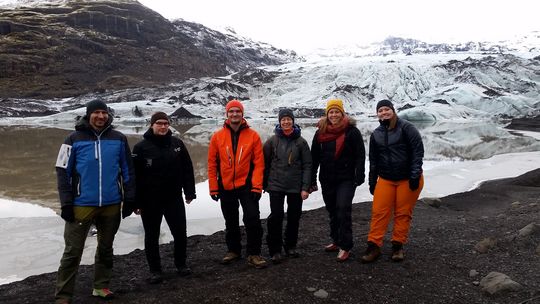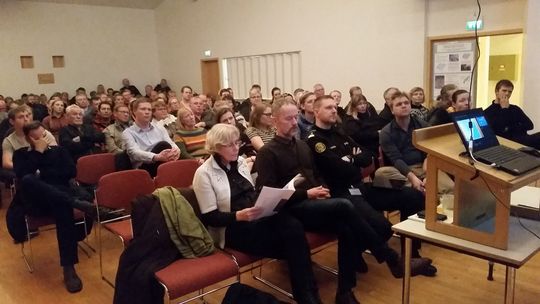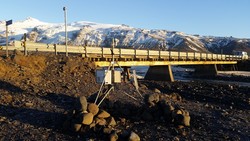Monitoring Öræfajökull – update 22. Dec. 2017
Real-time surveillance around Öræfajökull has been improved in the last month to better monitor the seismicity (significantly increased since September this year) and the release of geothermal water from the caldera (detected the first time in mid-November).
New seismometers, hydrological stations, web-cams and GPS have been installed in the area and data are now streaming to the Icelandic Meteorological Office which is in charge of the 24/7 monitoring service.
The recent seismicity has been showing a level comparable to the previous week. In December most of the earthquakes have had magnitudes smaller than M1 and the largest earthquake recorded so far had M2.5. Most of the seismicity is located close to the caldera and at a depth between 2-10 km (the depth has a fairly large uncertainty).
Recent hydrological and geochemical measurements suggest a smaller proportion of geothermal water to be released in Kvía river which seems to have reached its maximum in December
Estimates of the geothermal power beneath the volcano, as assessed by the temporal changes on the ice-surface are not suggesting an increase. There are no clear indications that water is accumulating beneath the ice in the cauldron and, given the trend of the activity until now, it is unlikely to expect a flood in the next months. However, it is very important to keep following this process with regular measurements of the caldera and the ice-surface deformation.
When considering all these data together, the interpretation is that the activity in Öræfajökull has been fairly stable over the last weeks without showing acceleration in the process. But it is considered too early to conclude that the activity is decreasing. For this reason the Icelandic Meteorological Office keeps the YELLOW level for the Aviation Color Code at Öræfajökull as the current status is still considered above the know background conditions.

At Sólheimajökull. Some of IMO natural hazards monitoring staff members. Photo: Kristín Jónsdóttir.

A community meeting in Öræfi 27 November 2017. Photo: Kristín Jónsdóttir.




